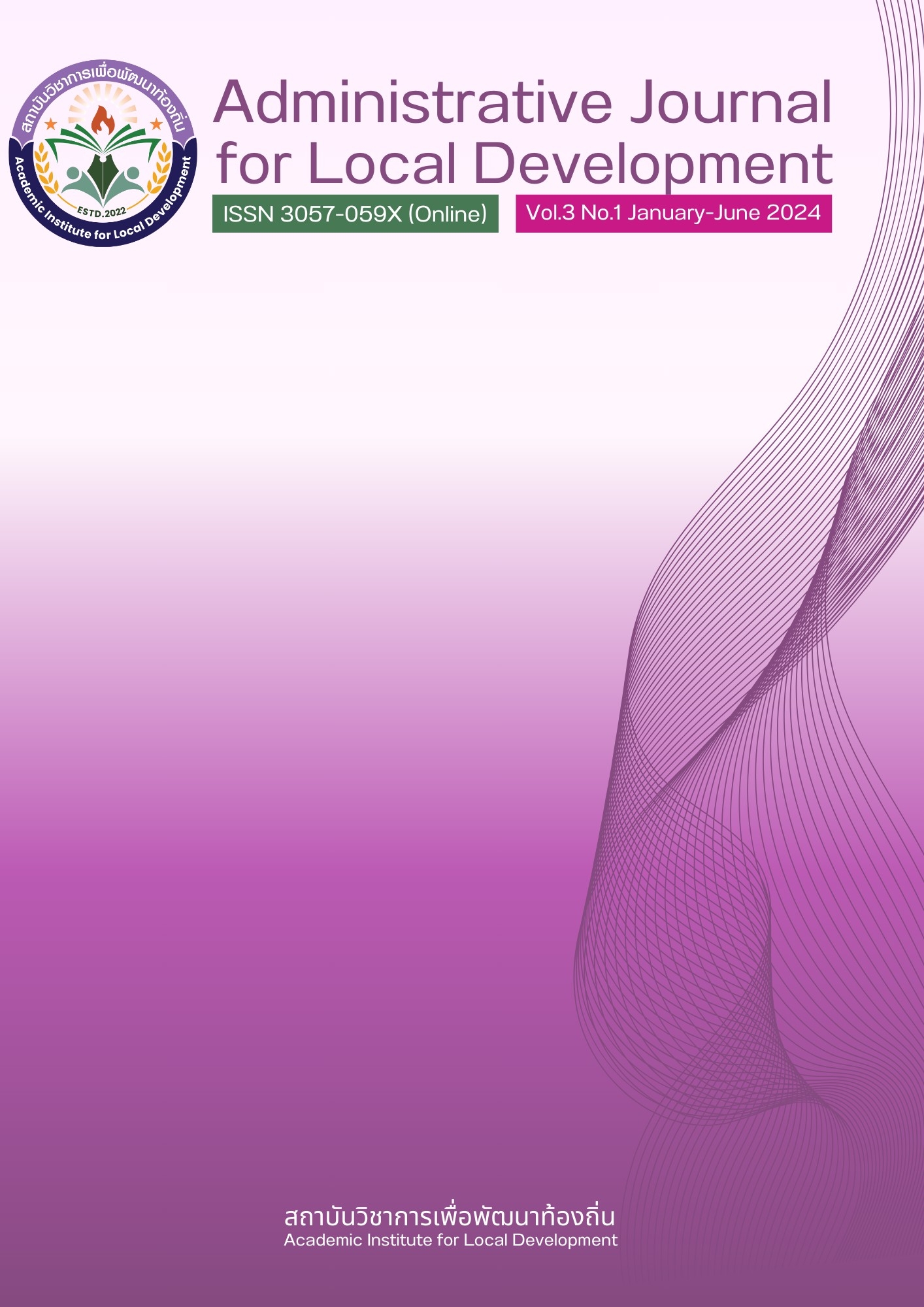Guidelines for Promoting Buffalo Conservation Ban Kra-om Kra-om Subdistrict of Samrong Thap District, Surin Province
DOI:
https://doi.org/10.14456/ajfld.2024.2Keywords:
conserve, buffalo, PropagateAbstract
Guidelines for promoting buffalo conservation. The primary objectives of this research are as follows 1) To investigate the historical background and the current state of Kra-om village. 2) To examine the challengesimpediments encountered in the process of raising buffalo in Kra-om vi To analyze the prevailing practices and strategies for buffalo-raising in village, with a specific focus on buffalo conservation. This research is centered on n Kra-om, situated within the Kra-om Subdistrict of the Samrong Thap Dist Province. Data acquisition was conducted through the administration of a structured questionnaire (interview schedule) and through the facilitation of group discussions. The gathered data was subjected to comprehensive analysis utilizing the SPSS computer software. This analysis encompassed the computation of frequency statistics, the determination of percentage values, the calculation of the average (mean), as well as the assessment of the minimum and maximum values. The data collection phase was carried out within the timeframe spanning from July 20th to July 30th in the year 2023.
Through a comprehensive examination of the area, it is evident that Ban Kra-om, located in the Kra-om Subdistrict of Samrong Thap District, Surin Province, is a unity uniquely suited for buffalo raising. The region boasts abundan sources and a profusion of water bodies, making it an invaluable res villagers engaged in buffalo husbandry. These water sources serve as essential assetsfor villagers when releasing their buffaloes from pens to graze or when tetheringthem. The primary occupation of most villagers revolves around agriculture, whichcompasses livestock rearing, general employment, and the cultivation of pegarden crops to maximize returns. The practice of organic farming is also prevalent.on assessing the risks inherent in the lives of buffalo farmers within thommunity, it is discerned that, overall, residents face relatively low levelsver, a prominent exception is the challenge associated with burvation, particularly concerning the expansion of buffalo breeding prameet the community's needs. While the current buffalo rearing endeavors are notprimarily for consumption but instead focus on sustaining the buffalo population, itis essential to ensure that breeding programs adhere to best practices to enhancethe prospects of successful buffalo conservation.
Downloads
References
จิรากรณ์ คชเสนี. (2549). มนุษย์กับสิ่งแวดล้อม (พิมพ์ครั้งที่ 4). กรุงเทพฯ: จุฬาลงกรณ์มหาวิทยาลัย.
ชลิตา บัณฑุวงศ์. (2556). ข้าวและชาวนาไทยในกระแสการเปลี่ยนแปลงในคน ข้าว นา ควายในวัฒนธรรมเอเชียตะวันออกเฉียงใต้ [วิทยานิพนธ์ปริญญามหาบัณฑิต ไม่ได้ตีพิมพ์]. มหาวิทยาลัยธรรมศาสตร์.
ณรงค์ฤทธิ์ อยู่เย็น. (2562). รูปแบบการจัดการเลี้ยงโคและกระบือต่อวิถีชีวิตยั่งยืนของ ชุมชนปกาเกอะญอ ในบ้านผาด่าน ตำบลทากาศเหนือ อำเภอแม่ทา จังหวัดลำพูน [วิทยานิพนธ์ปริญญามหาบัณฑิต ไม่ได้ตีพิมพ์]. มหาวิทยาลัยเชียงใหม่.
Downloads
Published
How to Cite
Issue
Section
License

This work is licensed under a Creative Commons Attribution-NonCommercial-NoDerivatives 4.0 International License.










